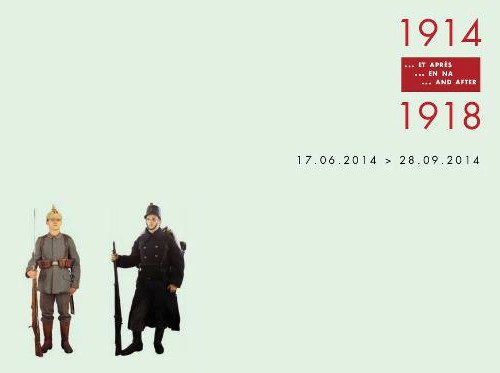1914-1918... and after
Jean-Marie de Busscher and «patriotico-tumulair art»
Artist, author, actor, and seaman, between 1976 and 1980 Jean-Marie de Busscher (1935-2001) wrote a column in Charlie Mensuel with the title "L'art patriotico-tumulaire" in which he presented with considerable irony the memorials built along the 800 km front of the Great War. In 1981, he played a German officer in Le bunker de la dernière rafale, a cult movie by Marc Caro and Jean-Pierre Jeunet.
Drawings by Henri Derée made in the German war camps
On 19 Augustus 1914, the young architect Henri Derée (1888-1974) was captured by the Germans and detained until 1918. Transferred from camp to camp he produced many drawings during these years that represent the harsh living conditions of the Belgian, British, Russian and Italian prisoners. When Henri Derée was later transferred to Switzerland due to failing health, his drawings took on a new colour and vitality, testimony to a regained happiness.
After the war, Henri Derée returned to his work as architect and designed
buildings, garden cities and also war memorials.
Memorials, mausoleums, crypts, ossuaries, stelae, memorials, lanterns…
The Archives d'Architecture Moderne collection includes several dozen original drawings of planned or built memorials in Belgium and France. All these works are commemorative, Belgium having served as a shield for France and suffering vast human and material losses as a result. After the war, the Belgians felt a deep need to pay tribute to their fallen, erecting memorials in their honour, sometimes naïve
and sometimes monumental.
